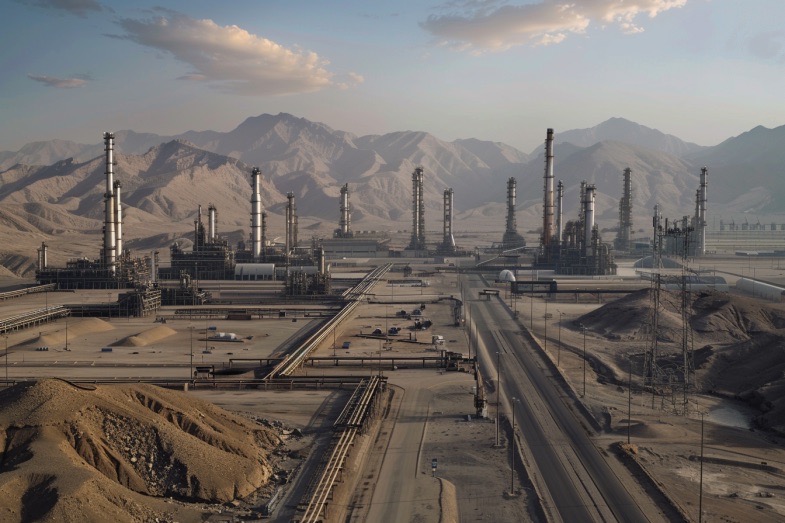Irish Authorities Crack Down on Cocaine Trafficking
DUBLIN — The text message came with a Santa emoji. “OK lads. No need for luck. Really this couldn’t be any more straightforward. Just relax and this will all be over soon.”
It was sent to a fisherman from Ukraine and an unemployed man from Teesside who were sailing to the middle of the Irish Sea to collect cocaine from a passing cargo ship, the MV Matthew.
As it turned out, they needed plenty of luck and very little was straightforward.
The two men were part of an audacious attempt to traffic more than 2.2 tons of cocaine into the UK and Europe. It ended in failure, with a successful strike against the powerful drug cartels by the Irish authorities.
Eight men were convicted and jailed for a total of 129 years. All of the cocaine was destroyed.
But despite this result, law enforcement agencies across Europe admit they are struggling to stop the growing quantity of cocaine crossing the Atlantic from South America.
The Maritime Analysis Operations Centre (MAOC), which polices the transatlantic drug trade, says 100 ships suspected of trafficking drugs to Europe were not stopped last year because the authorities didn’t have enough vessels to intercept them.
“We have the intelligence of the vessel that’s crossing the Atlantic… that it’s loaded at that time, and still we don’t have the interception assets available,” its director, Sjoerd Top, tells Panorama.
Up to 600 vessels are monitored by MAOC each day, while record amounts of cocaine are being produced in South America, he adds.
UK users consumed 117 tons of cocaine last year, the UK’s National Crime Agency reported. The number of cocaine-related deaths has risen ten-fold since 2011.
The drug is usually shipped in large container ships to European ports like Rotterdam and Antwerp. But security has been tightened there, so smugglers are looking for alternative routes.
Many are now using at-sea drop-off methods, unloading bales of cocaine from a “mother” vessel to be picked up by a smaller “daughter” craft and taken to shore.
“We’ve intercepted tons of cocaine in the last six months alone, multiple one, two ton seizures through this method at sea,” Charlie Eastaugh, UK Border Force maritime director, tells us.
But the cartels are unrelenting and have increasingly been targeting Ireland — the only European country with an open border with the UK — as a back door.
Ireland has almost 2,000 miles of coastline, much of it ideal for smuggling, with many hundreds of isolated inlets.
And that coastline is vulnerable. The country’s defence forces help combat the cartels. Ireland has the lowest defence spending in the EU, just 0.2 % of GDP. The Irish Naval Service has eight ships but can usually put just two to sea because of a shortage of sailors.
“We have 132,000 square miles of water under our jurisdiction. A responsibility to the EU for 16% of European waters… two ships. It doesn’t make any sense,” former naval commander Eugene Ryan says.
It is the same with air support. The Irish Defence Forces are supposed to provide the helicopters to help protect the coastline. But Panorama has been told that sometimes they don’t have a single one available that can do the job.
“The narcotic superhighway comes right across the Atlantic and one of the first countries it reaches is Ireland. Our territorial waters are a free-for-all really, it’s like the Wild West out there,” says Cathal Berry, an ex-Irish Army commandant.
The Irish government says it maintains a “continuous presence and vigilance” within its maritime domain. It says funding for defence will increase by €600m (£520m) — a 55% increase over four years — and “significant initiatives… have also resulted in the stabilisation of Naval Service strength”.
While the record cocaine seizure on the MV Matthew was a success for the Irish state, it also showed the potential weaknesses in the country’s defences.
A group of cartels, believed by law enforcement to be led by the notorious Kinahan organised crime group, bought the cargo ship for around £10m in August 2023.
In mid-September, three men were sent to buy a trawler called the Castlemore in the fishing port of Castletownbere, in the south-west of Ireland.
They were Ukrainian Vitaliy Lapa, Jamie Harbron from Stockton-on-Tees and a Scottish man who had arrived from Dubai — who police called Person of Interest One.
Police were watching as the Scotsman oversaw a €300,000 (£260,000) payment from a building company in Dubai. Panorama has identified him as Glaswegian Stefan Boyd — although it is not known if he played a wider role.
Boyd flew back to Dubai first class, where he is believed to remain. Panorama has been unable to contact him for comment.
Lapa and Habron — who were later convicted — took the Castlemore to sea on Friday 22 September, not knowing that police had fitted a tracker to the vessel.
The police later obtained messages that showed the crew were getting instructions from Dubai.
The Irish authorities tracked the MV Matthew and the Castlemore over the next two days, as the two vessels attempted, but failed, to rendezvous in the Irish Sea during storms. The trawler had engine problems and lost power intermittently.
As the weather worsened, the Iranian skipper of the MV Matthew, Soheil Jelveh, wanted to head north, but his Dubai bosses warned him to avoid UK waters. “The Irish coastguard has VHF only, the British coastguards have boats too,” they messaged.
At the time, the Irish navy only had one ship at sea, the WB Yeats. It was, in fact, already tracking the smugglers and awaiting an order to intervene.
On Sunday night, the Castlemore ran aground on a sandbank in the storm and the traffickers on the trawler had to call the Irish coastguard to save them. They were winched to safety by helicopter.
On the MV Matthew, panic had set in. Less than 24 hours later the skipper falsely claimed he had been injured and needed urgent treatment. He too was airlifted to safety by the coastguard, which was unaware of the navy operation.
At hospital, it was discovered Jelveh had more than $50,000 (£37,982) in his bag. He was arrested after jumping off a bed and trying to make a dash out the hospital doors.
Meanwhile, a Filipino man, Harold Estoesta, had taken over as skipper and tried to evade the navy.
Voice messages and texts tell the tale of the next few hours.
A boss in Dubai, calling himself Captain Noah, told the crew to hold their nerve.
“My stress level is near to heart attack. Try to be calm, be calm. Full speed go,” he said in a voice message.
But the navy ordered the MV Matthew to redirect to Cork — eventually firing warning shots. The first time since the 1980s.
One recorded exchange gives a sense of the drama, with the new skipper telling the navy, “We are afraid. We will go away because you fire at us. Please do not fire at us. My crew now panicking, crying”.
The navy commander responds: “You do not have to be afraid. All I ask is that you proceed to Cork Harbour.”
The Irish authorities decided to board the MV Matthew using the Irish Army Rangers Wing, but there weren’t any suitable helicopters available.
Five were in a hanger, waiting for spare parts and servicing. The only airworthy helicopter was being used as an air ambulance.
“They had to strip out all the medical equipment, and re-task it for a military tasking,” says Cathal Berry, a former deputy commander of the Rangers Wing. Two machine guns were quickly installed.
The bosses in Dubai still did not think the Irish military could stop them.
Captain Noah told them in an audio message, “Guys, please listen to me. ‘Til now there is no helicopter for you guys, no commando, nothing. OK, be confident.”
The final messages sent to Captain Noah from the MV Matthew were pictures of a helicopter hovering over the ship. Seconds later, the rangers dropped onto the deck and captured the crew.
Against the odds, and despite the shortage of ships and helicopters, the drug bust was a win for the Irish state.
Since then, another four attempts to traffic large quantities of cocaine to the UK have been uncovered by Irish police. But the traffickers are relentless and have huge resources.
“If I was in narco now I’d be rubbing my hands together,” says Eugene Ryan, the former commander of fleet operations in the Irish navy.
“If they send 20 tons of cocaine on a number of vessels and some get caught, they’ll still get 12-15 tons in.”
Drug trafficking is a growing problem across Europe — and those leading the fight say every country needs to do more to stop it. — BBC



